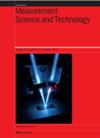应用于机器视觉检测注塑产品表面缺陷的新型深度学习算法
IF 3.4
3区 工程技术
Q1 ENGINEERING, MULTIDISCIPLINARY
引用次数: 0
摘要
在现代工业中,注塑产品的表面缺陷检测对于控制产品质量和优化生产过程至关重要。随着光学测量和计算机技术的发展,机器视觉检测方法取代人工检测已被广泛采用。然而,目前的机器视觉检测方法很难同时确保注塑产品表面缺陷检测的准确性和效率。考虑到这一问题,本文提出了一种应用于注塑产品表面缺陷机器视觉检测的新型深度学习算法。为了训练和评估所提出的深度学习算法,建立了一个图像采集平台,并获得了注塑产品表面缺陷的数据集。在所提出的深度学习算法中,基于重参数化的卷积模块被用于特征提取和特征融合。提出了一种基于分层聚类初始化的中值迭代聚类算法,以获得与实际缺陷尺寸分布高度匹配的先验锚点。在边界框回归中使用了新颖的 Focus-Entire Union over Covering(Focus-EUoC)损失函数。在此基础上,在模制产品表面缺陷数据集上对应用于机器视觉检测的深度学习算法进行了评估。实验结果表明,与传统检测算法和目前机器视觉检测中使用的其他深度学习算法相比,所提出的深度学习算法在获取的数据集上表现出更高的检测精度和检测效率。检测精度达到 0.964,检测召回率达到 0.955,每个子图的推理时间仅为 6.1ms,证实了其有效性。本文章由计算机程序翻译,如有差异,请以英文原文为准。
A novel deep learning algorithm applied to machine vision inspection for surface defects of injection moulded products
In modern industry, the surface defect inspection of injection moulded products is crucial for controlling product quality and optimizing the manufacturing process. With the development of optical measurement and computer technology, machine vision inspection methods have been widely adopted instead of manual inspection. However, current machine vision inspection methods are difficult to simultaneously ensure the accuracy and efficiency of surface defect inspection of injection moulded products. Considering this problem, a novel deep learning algorithm applied to machine vision inspection for surface defects of injection moulded products is proposed. To train and evaluate the proposed deep learning algorithm, an image acquisition platform is established and the dataset of surface defects in moulded products is obtained. In the proposed deep learning algorithm, reparameterization-based convolution modules are employed for feature extraction and feature fusion. A median iterative clustering algorithm based on hierarchical clustering initialization is proposed to obtain prior anchors that are highly matched with the actual distribution of defect sizes. A novel Focus-Entire Union over Covering (Focus-EUoC) loss function is utilized for bounding box regression. On these bases, the proposed deep learning algorithm applied to machine vision inspection is evaluated on the dataset of surface defects in moulded products. The experimental results indicate that compared to the traditional inspection algorithms and other deep learning algorithms currently used in machine vision inspection, the proposed deep learning algorithm exhibits superior inspection accuracy and inspection efficiency on the acquired dataset. The inspection precision reaches 0.964, the inspection recall reaches 0.955, and the inference time for each subgraph is only 6.1ms, confirming its effectiveness.
求助全文
通过发布文献求助,成功后即可免费获取论文全文。
去求助
来源期刊

Measurement Science and Technology
工程技术-工程:综合
CiteScore
4.30
自引率
16.70%
发文量
656
审稿时长
4.9 months
期刊介绍:
Measurement Science and Technology publishes articles on new measurement techniques and associated instrumentation. Papers that describe experiments must represent an advance in measurement science or measurement technique rather than the application of established experimental technique. Bearing in mind the multidisciplinary nature of the journal, authors must provide an introduction to their work that makes clear the novelty, significance, broader relevance of their work in a measurement context and relevance to the readership of Measurement Science and Technology. All submitted articles should contain consideration of the uncertainty, precision and/or accuracy of the measurements presented.
Subject coverage includes the theory, practice and application of measurement in physics, chemistry, engineering and the environmental and life sciences from inception to commercial exploitation. Publications in the journal should emphasize the novelty of reported methods, characterize them and demonstrate their performance using examples or applications.
 求助内容:
求助内容: 应助结果提醒方式:
应助结果提醒方式:


